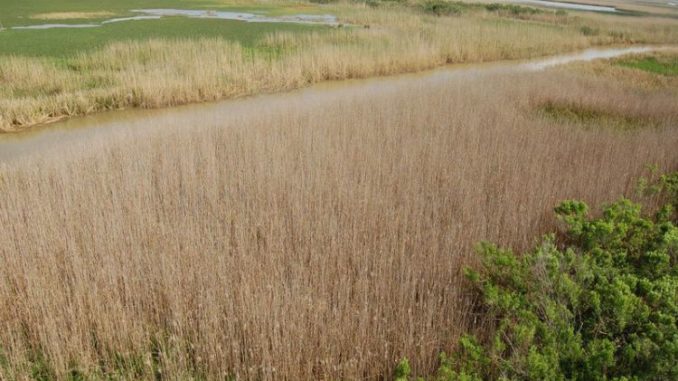
More than 100,000 acres affected; pest already found on Grand Isle, LDWF says
A tiny insect is causing a huge problem in southern Plaquemines Parish, adversely affecting more than 100,000 acres of roseau cane — the dominant vegetation of the Mississippi River Delta.
And as of right now at least, the bad news is it continues to spread — with no real solution in sight.
The pest, known as Phragmites scale or the roseau cane mealy bug, is native to China and Japan, and was discovered only last fall in southeastern Louisiana. According to biologists, it continues to spread pretty much unabated.
“We could be witnessing a major habitat change on the Mississippi River Delta in the next year or so because of this,’’ Jack Montoucet, secretary of the Louisiana Department of Wildlife and Fisheries, said. “It could be devastating. We don’t really have an answer yet or the solution.
“But it’s clear that everyone needs to understand this could be a catastrophic problem, and we need to put this on the front burner.’’
Normally green and 10 feet tall this time of year, affected cane is now brown and mostly leafless. The vegetation acts like the ‘glue’ that holds much of the Delta together during flooding, tropical storms and hurricanes — and the mealy bug has already been spotted in Grand Isle and other parts of Jefferson Parish.
“Roseau cane is one of the most robust and hardiest plants that I’ve come across,’’ said Todd Baker, a director in LDWF’s coastal and non-game resources staff. “It can live in 3 feet of water. It can be inundated for long periods of time. It can live out of water. It can tolerate 20 parts per thousand salinity. It can tolerate fresh water. You can burn it, you can spray it and it keeps coming back.
“The fact that this bug can damage it to the point that it has is amazing and disturbing.’’
In addition to standing up well in storms, the cane also assists in trapping sediment from the Mississippi River to form Louisiana’s bird-foot delta. Its destruction could mean even more rapid land loss, turning what is now marsh into open water.
Even more frightening, the pest could eventually affect crops like sugar cane and sorghum, according to biologists.
“Roseau cane is a grass,’’ Baker said. “What is known is that where this scale is native (Asia), it gets into other grasses and reeds. It may attack other plants in the United States.
“Now that it is present in Louisiana, we don’t know what it may impact. It’s a threat, but we simply don’t know if it will move into other vegetative species or not.’’